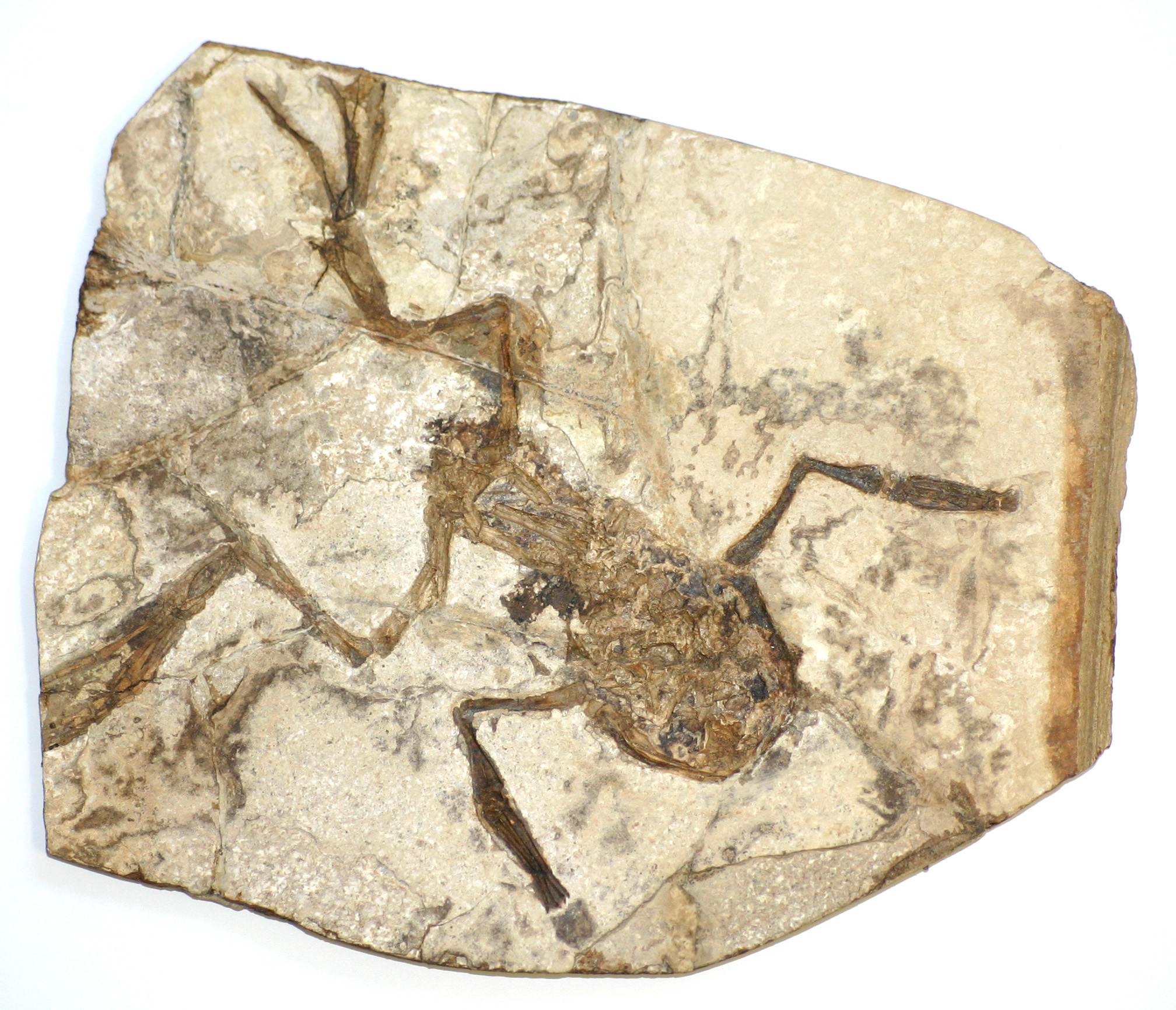- Palaeobatrachus
Taxobox
name = "Palaeobatrachus"
status = fossil
fossil_range =Eocene toMiocene 
image_width = 240px
image_caption = Fossilised "Palaeobatrachus gigas"
regnum =Animal ia
phylum =Chordata
classis =Amphibia
ordo =Anura
familia =Palaeobatrachidae
genus = "Palaeobatrachus""Palaeobatrachus" ('ancient frog') was a primitive
frog from theTertiary period (22-5 million years ago), Central Europe. It was about 8-10 cm (4 in) long and resembled the present day African clawed toad "Xenopus ". Its skeletal remains are plentiful in freshwater sediments in westernBohemia , in Geiseltal (westGermany ) and in east Germany. They are sometimes preserved very well indeed, with impressions of internal organs, muscles, nerves, blood vessels and epidermis, and with traces of coloring. Tadpoles and eggs have also been found."Palaeobatrachus" had a relatively broad skull the shape of a Gothic arch. Its body was relatively large and the female was usually larger than the male (
sexual dimorphism ).These frogs lived permanently in water. Their bag-shaped
lungs , on the dorsal side of their body, enabled them to remain submerged for long periods. They inhabitedthrough-drainage basins or swamps where brown coal deposits were formed. Like the African clawed toad, they probably lived on smallcrustacean s, insect larvae and small fish and themselves provided sustenance for many other animals.The climatic change at the beginning of the
Pliocene was a real catastrophe for "Palaeobatrachus", which required warmth, and, being specialized, was unable to adapt itself to the altered conditions.References
*Benes, Josef. Prehistoric Animals and Plants. Pg. 178. Prague: Artia, 1979.
Wikimedia Foundation. 2010.
